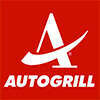Personalisation is synonymous with industry progress. Take, for example, the taxi industry. Whereas 20 years ago the service was homogenous – you hailed a generic-looking car on the street with no control over the nuances – now you have a fully personalised experience, as demonstrated by Uber, which allows you to choose everything from the pick-up time and car to the music you listen to on board. A similar shift has occurred in the dining industry, where every step is personalised. Apps such as OpenTable offer diners a list of restaurants based on their favourite food, price range and even suitability for the particular evening – say, a first date.
And although the experience once at the restaurant has been slow to lose its homogeneity – traditionally you order from a menu and that’s it – this has also become personalised.
After all, if the logistical and technological platforms exist, why not cater to individual tastes as the industry does in all other respects?
This personalisation can be seen across the spectrum. Earlier this year food nutrition think-tank FoodFluence identified key trends to watch out for in 2016, and unsurprisingly the ‘direct to customer’ trend, or personalisation, was on the radar.
“The customer is in control now and traditional marketing is no match for technology-supported consumer beliefs,” says Julian Mellentin, editor of New Nutrition Business.
At the large-scale end, last year McDonald’s introduced automatic kiosks that not only increase the efficiency of a transaction but also allow you to customise your burger, from the type of bun to the number of pickles. Within six months McDonald’s saw profits increase, with customers spending almost double what they usually spend.
And McDonald’s is not alone in understanding that personalisation is essential to growth and satisfying its customers’ needs.
Pizza Hut is on the verge of introducing interactive tables that allow diners to customise their pizzas by dragging toppings across an interactive screen. But the trend doesn’t just apply to fast-food chains. Hong Kong has seen a lucrative and popular boom in nutritious, customisable food from restaurants such as Nutrition Kitchen, which even offers speedy delivery – ideal for the city’s many businesses.
In the small-scale sector, pubs are leading the personalisation experience. Many, such as London’s The Thirsty Bear and Berlin’s The Pub, give each customer their own beer tap and iPad screen, allowing them to pay electronically at the end and pull their own draught as and when they want. The fact that such personalised trends are prevalent around the world and across industries demonstrates that it’s an organic movement. And the key to understanding the powerful growth of the personalised experience is simply that the customer is now in control, in every way, thanks to modern logistical and technological platforms.
